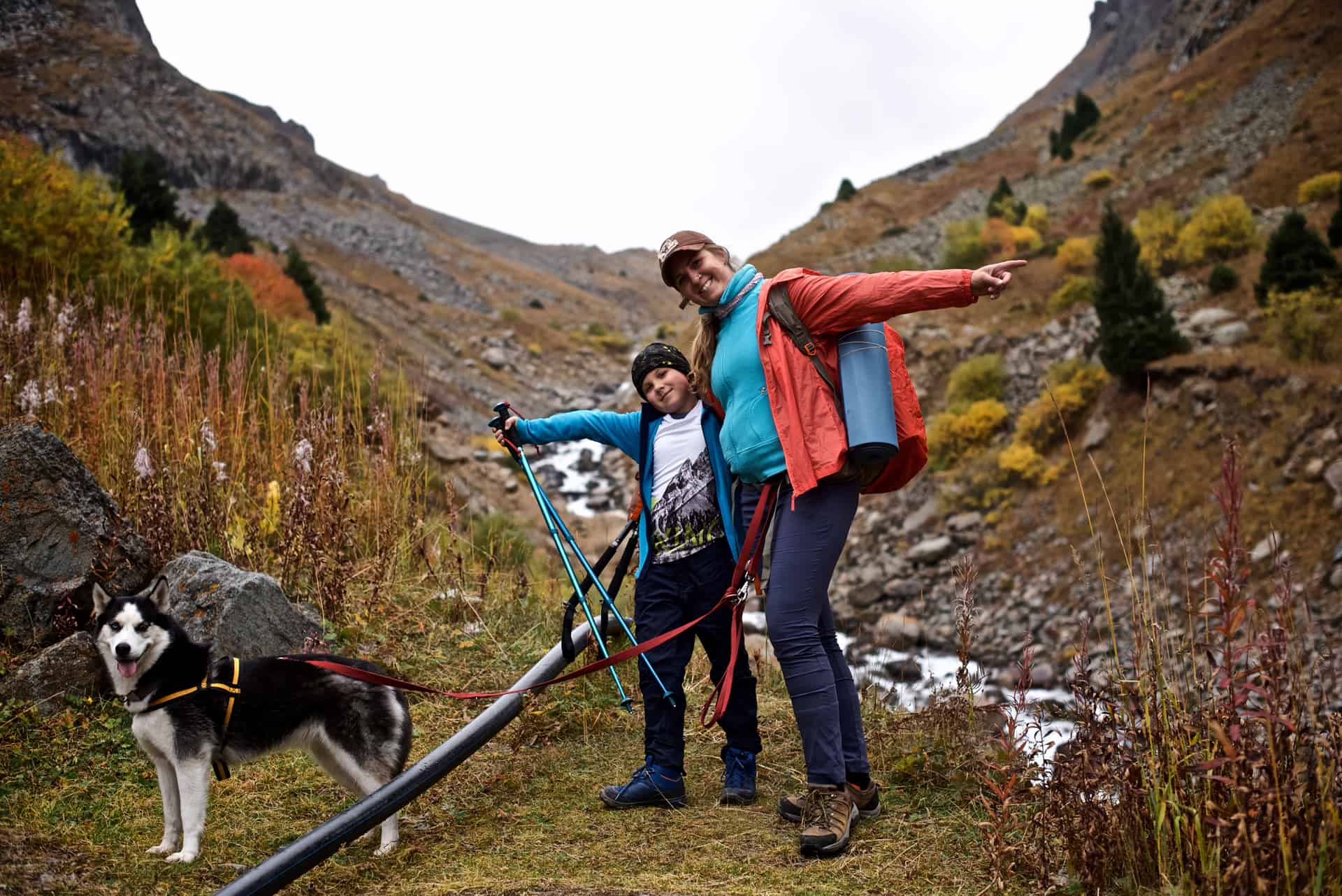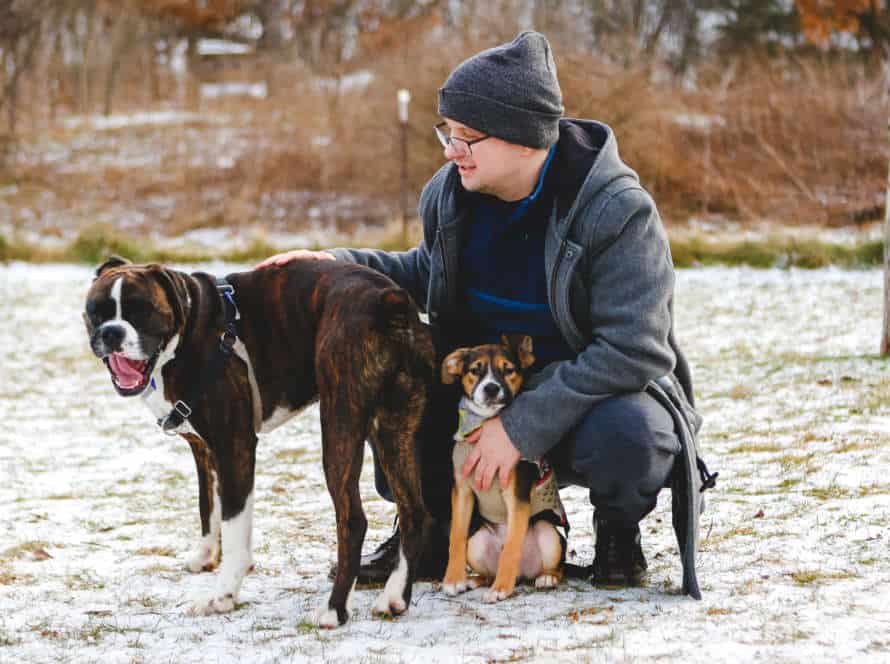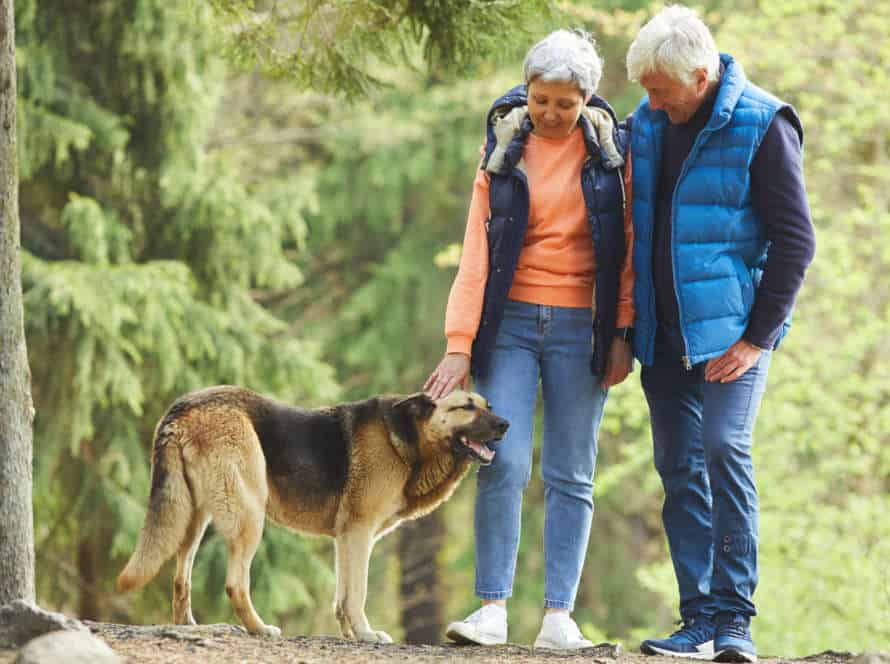Hiking Adventures: Exploring New Trails with Your Best Friend
Exploring new hiking trails with your best friend is the perfect way to bond, exercise and soak up nature. Here are some tips to guarantee a safe and fun time:
- Choose a trail that fits you and your pup’s physical abilities.
- Check the weather, trail conditions and pet policies before you go.
- Pack essentials like water, snacks, a first-aid kit, sunscreen and bug repellent.
- Keep your pup on a leash and in control at all times. This prevents accidents or unexpected wildlife interactions.
- Take regular breaks in shaded areas to rest, hydrate, then continue your journey!
Hiking with your bestie can be an amazing experience. Just plan and prepare for the best possible experience.
Preparing for the Hike
Exploring unknown trails with your bestie? Let’s make it an amazing adventure! To have a successful and enjoyable hiking trip, it’s essential to be prepared. Beginner or pro, always take extra steps to ensure you have the essentials for a fun and safe journey. Here are some of the steps you should take while preparing:
- Research the trail beforehand in terms of difficulty level, distance, terrain, and weather conditions to plan accordingly.
- Wear appropriate clothing and footwear depending on the trail conditions and weather. Layering is essential for unpredictable weather.
- Carry essentials such as a map, compass, first-aid kit, whistle, headlamp, matches, lighter, and a multi-purpose tool. The rule of thumb is to pack light and carry items that serve multiple purposes.
- Stay hydrated on the trail by carrying a water bottle or hydration bladder. Remember to refill at water sources along the trail.
- Carry extra food and snacks to keep your energy levels up. Portable, non-perishable items like trail mix, energy bars, and sandwiches are convenient options.
- Bring a backpack that fits comfortably and distributes weight evenly. A comfortable backpack is essential for long hikes.
- Inform a friend or family member about your hiking plans and itinerary in case of emergencies. It’s always recommended to hike with a partner.
Choosing the right trail for you and your dog
Selecting the perfect trail for you and your pup is key to having an amazing hiking experience. Here are some points to ponder before choosing a route:
- Distance & Terrain: Think about the distance and landscape. Pick one that’s suitable for both of you.
- Weather: Pick a path that’s safe and cozy for your doggo, depending on the climate.
- Trail Traffic: If your pup loves people, select a less crowded trail.
- Leash Laws: Check the local rules. Make sure your pup is allowed.
- Trail Conditions: Ensure the trail is pup-friendly and safe for their paws.
Always bring enough water and snacks for both of you, plus a first-aid kit. By thinking about these factors beforehand, you and your furry best friend can have a secure and delightful hike.
Essential gear for your hike
Before setting off on a trail, it’s essential to have the right gear for a successful and secure hike. Here are must-have items:
- Footwear: Buy hiking boots or shoes with solid soles and ankle support.
- Navigation: Bring a map, compass, or GPS to keep from getting lost.
- Hydration: Carry enough water and something to purify more water like a filter or tablets.
- Clothing: Wear layers in case of weather changes and bring a rain jacket.
- First Aid: Have a basic kit with bandages, painkillers, and antiseptic wipes for minor injuries.
- Snacks: Pack snacks with carbs and protein to stay energized.
It’s always better to over-pack than to be unprepared on the trail. Enjoy your hike!
Physical preparation for the hike
Planning and enjoying a hike requires physical preparation. Here are a few tips to help!
- Start small and work up: Begin with short, easy hikes. Then, increase the difficulty and distance.
- Stretching: Do stretches before and after to avoid injury and soreness.
- Strength training: Squats, lunges, planks, and Pilates can help you prepare for inclines. Plus, they build overall fitness and stability.
- Cardio: Running, biking, or brisk walking can help increase stamina and endurance.
- Hydration: Drink fluids before, during, and after hiking. Don’t forget to stay hydrated!
Pro tip: Talk to your doctor before beginning a new workout regimen or hike. And never go alone, choose hiking partners wisely for fun and safety.
Guidelines for Hiking with Your Dog
Hiking with your pup? An awesome way to bond! Exercise and explore new spots too – but first, plan ahead. Consider your pup’s safety first. Here are some helpful guidelines for the best hike experience ever:
Etiquette and rules to follow on the trail
When hiking trails, follow proper etiquette and rules for safety. Here are some guidelines when hiking with your pup:
- Check trail rules before bringing your dog. Most trails require leashes.
- Bring bags to clean up after your pooch. Dispose of waste properly to keep the trail clean.
- Yield to other hikers. Move to the side so they can pass safely.
- Stay on the trail. Do not hike off the trail and disturb the ecosystem.
- Know your dog’s limits. Hike at a pace they can handle. Bring water, snacks, and rest when needed.
Keeping your dog safe and healthy on the trail
When hiking with your pup, there are a few rules to follow for their safety and well-being. Remember these tips:
- Research dog-friendly trails that fit your pup’s fitness level and abilities.
- Bring food and water for both of you, plus a portable water bowl.
- Keep your dog leashed at all times, to avoid them getting lost or bothering wildlife.
- Check your dog for ticks and pests often.
- Be ready to clean up after your pup and pack out their waste.
- Watch out for signs of fatigue, overheating, and dehydration in your dog. Take breaks and rest when needed.
- Respect the trail and other hikers. Keep your pup under control and follow trail etiquette.
By following these guidelines, you and your doggo can have a safe and fun hiking experience!
How to handle unexpected situations
Hiking with your pup? Prep for any surprises! Here’s how:
- First Aid: Carry a kit of must-have supplies for you and pup.
- Weather: Check forecast before leaving. Pack rain gear if rainy. Turn back if weather is too severe.
- Wild Animals: Leash your pup. Keep an eye out on trails.
- Route: Plan ahead, stick to plan, tell someone your route. Bring a map, compass, and GPS device.
By following these guidelines, you and your pup can be safe in case of any unexpected surprises on the hiking trail.
Exploring the Trail with Your Dog
Hiking with your pup? What a great outdoor activity! Enjoy the amazing views of nature, feel the fresh air in the wild, and share an adventure with your four-legged pal. Before you go, remember to think about the trail condition, train your pup, and get all the right gear. Read on for more information!
Making regular stops for water and rest
When you take your pup on a hike, regular breaks for water and rest are a must. Dogs can quickly become dehydrated and tired when discovering new trails. Here are some tips to keep your pup safe and content during your outdoor explorations:
- Bring lots of water for both you and your pet. Plan to stop for a drink every 15-20 minutes, depending on the weather and length of the walk.
- Spot areas with shade or cool spots for your pup to rest. Hot pavements can cause burns on your pup’s feet, so try to avoid them.
- Watch for signs of fatigue or heatstroke, such as heavy panting or sluggishness. Take a break if needed.
- Don’t forget to pack a first aid kit for your pup in case of any accidents, bites, or cuts during the hike.
Enjoy your journey with your beloved four-legged pal!
Interacting with other hikers and dogs on the trail
Interacting with hikers and their pooches on the path is essential for a safe and enjoyable hiking experience with your four-legged pal. Here are some tips to guarantee great interactions with hikers and their dogs:
- Always be alert and aware. Keep your pup on a leash and under your control to avoid surprises.
- Respect the space and privacy of other hikers. Give them enough distance to pass safely or choose a side of the trail to step off onto.
- Understand doggy behavior and body language. Not all dogs are gregarious or comfy around other pooches, so be mindful of their signs and respect their limits.
- Don’t forget to clean up after your pup. Bring waste bags and take away their waste, leaving no trace on the trail.
- Be kind and polite. Greet other hikers and their dogs with a smile and a hello to create a welcoming and positive atmosphere on the trail.
Enhancing the hiking experience for you and your dog
Hiking with your pup? Make it a great experience! Here are some tips:
- Look for dog-friendly trails with easy-medium difficulty.
- Don’t forget to pack food, water & snacks – plus a collapsible bowl.
- Keep your dog on a leash, unless the area allows off-leash.
- Vaccinate & flea/tick treat your dog before hiking.
- Bring a first-aid kit with medications & emergency supplies.
- Respect trail etiquette & pick up after your pup.
These tips will make your hike with your doggo awesome!
Outdoor Challenges and How to Deal with Them
Exploring outdoors with your best mate can be thrilling and rewarding. But, you may come across some obstacles. This section discusses the most typical outdoor troubles and how to manage them. From changing weather to wildlife encounters, here are tips to make your wilderness journey simpler.
Extreme weather conditions and what to do
Hiking can become tricky in extreme weather conditions. But, with the right preparation and knowledge, you and your best bud can stay safe and have fun on the trails! Here’s what to keep in mind:
- Heatwaves: Hike during cooler parts of the day. Wear light and breathable clothes. And, bring lots of water.
- Thunderstorms: Look for shelter in a sturdy building or car. If you can’t find one, avoid open fields and tall trees. Head to lower ground.
- Cold temperatures: Layer up. Base layers, mid-layers, and outer layers that are windproof and waterproof. Wear something on your head, hands, and feet. And, take regular warm-up breaks.
- High winds: Secure any loose items. Steer clear of cliffs and tall trees. And, use trekking poles for stability. Slow down if needed.
By following these tips, you can continue to explore new trails in different weathers – safely!
Navigation challenges on the trail
Navigating a new trail can be a challenge. Unexpected conditions, terrains, and weather can make it tough. Here are a few tips to help you:
- Trail Markings: Download a map and bring a compass to stay on track.
- Changing Terrains: Wear the right shoes and clothing, and keep a slow pace.
- Weather Conditions: Check the forecast and carry a rain jacket, compass, and waterproof map.
These tips will help you tackle navigation challenges and make the most of your adventure!
Handling medical emergencies while on the trail
Heading out for a hike? Remember to be ready for any medical emergencies! Here’s how to handle them on the trail:
- Carry a first aid kit with you. It should include gauze, band-aids, antiseptic, and pain relievers.
- Learn basic first aid and CPR. That way, you’re ready if something happens!
- Stay calm. Evaluate the situation before doing something. If it’s safe, move the injured person to a safe spot and call for help.
- If someone is unconscious or not breathing, start CPR right away and keep going until help arrives.
- Pressure with a clean cloth may help if there’s any bleeding.
Remember: always hike with another person or group. Let someone off the trail know your route and when you plan to return; just in case of an emergency.
Completing your Hiking Adventure
Trailblazing by foot can be a tough yet rewarding experience! Preparedness and the right attitude are key to a successful hiking journey. Here are some tips for a safe and enjoyable adventure:
Tips for post-hike recovery
Post-hike recovery is essential. Here’s some tips to help you out:
- Stretch – do it before and after your hike. Focus on legs, hips, back and shoulders.
- Hydrate – drink lots of water before, during and after. This will reduce soreness and fatigue.
- Rest – give your body plenty of rest afterwards. Get enough sleep to help muscle recovery.
- Nutrition – eat a balanced meal with healthy carbs, proteins and fats. Refuel your body after a long hike.
- Ice – use ice or cold therapy on problem areas. Ice your sore muscles for 15-20 minutes, a few times a day.
- Pro tip – take a cool shower after your hike. This will reduce inflammation and promote muscle recovery. Also, take it easy for the next few days while your body recovers.
Reflecting on your hiking adventure with your dog
Exploring nature with your pup is an amazing and satisfying experience! To really feel the joy of your hike, it’s important to take some time to think about it. Here are some ideas:
- Admire the views and the precious time spent with your canine companion.
- Remember the challenges you conquered – like steep paths or wild weather.
- Look back at any photos or videos you took on your trip.
- Start a scrapbook of your adventures together – it’ll be a special memento.
- Plan your next hike and anticipate more fantastic memories with your best friend.
Pro Tip: Before you go, research the trail and check if pets are allowed. Also, bring enough food, water, and supplies for your pup.
Planning your next hiking adventure with your canine companion
Hiking with your furry best friend can be a great experience. But, it’s important to plan carefully for both you and your pup’s safety. Here are some tips:
- Choose a dog-friendly trail. Check first if the trail allows dogs. Some may need leashes.
- Pack essential items. Bring food, water and snacks. Plus, a first-aid kit, poop bags, and leash.
- Train your dog. Before hitting the trail, make sure they’re well-behaved and trained. Practice walking on a leash and commands.
- Check the weather. Choose a day with mild temperatures. Be ready for weather changes.
- Be mindful of physical ability. Just like humans, dogs have limits. Choose a trail that matches their fitness level.
- Follow trail etiquette. Respect other hikers and their dogs. Keep your pup on a leash when necessary. Clean up after them.
With proper planning, hiking with your canine companion can be fun and rewarding.
Pro tip: Ask your vet if your pup is healthy enough for hiking, and if they’re up-to-date on vaccinations.
Frequently Asked Questions
Q: What gear do I need for a hiking adventure with my best friend?
A: You will need comfortable hiking shoes, appropriate clothing, a backpack with water and snacks, a map, a first-aid kit, and sunscreen.
Q: How do I choose the best hiking trail for my friend and me?
A: Consider the length, difficulty, and scenery of the trail. You should also check if dogs are allowed if you plan to bring your furry companion.
Q: Can I bring my dog on a hiking adventure?
A: It depends on the trail. Some trails allow dogs while others do not. Always check the trail regulations before bringing your pet.
Q: How can I make sure my best friend and I stay safe while hiking?
A: You should always carry a map and a first-aid kit. Tell someone your hiking plans and expected return time. Stay on marked trails and watch for signs of dehydration or overheating.
Q: Do I need to be in shape for a hiking adventure?
A: You should be in moderately good shape for most hiking adventures. If you have any concerns, start with shorter and easier hikes to build up your strength and endurance.
Q: What are some tips for taking great photos on a hiking adventure?
A: Take photos in the early morning or late afternoon when the lighting is best. Try various angles and perspectives, such as capturing your friend from a distance or focusing on the trail itself. Don’t forget to clean your camera lens before the adventure!







